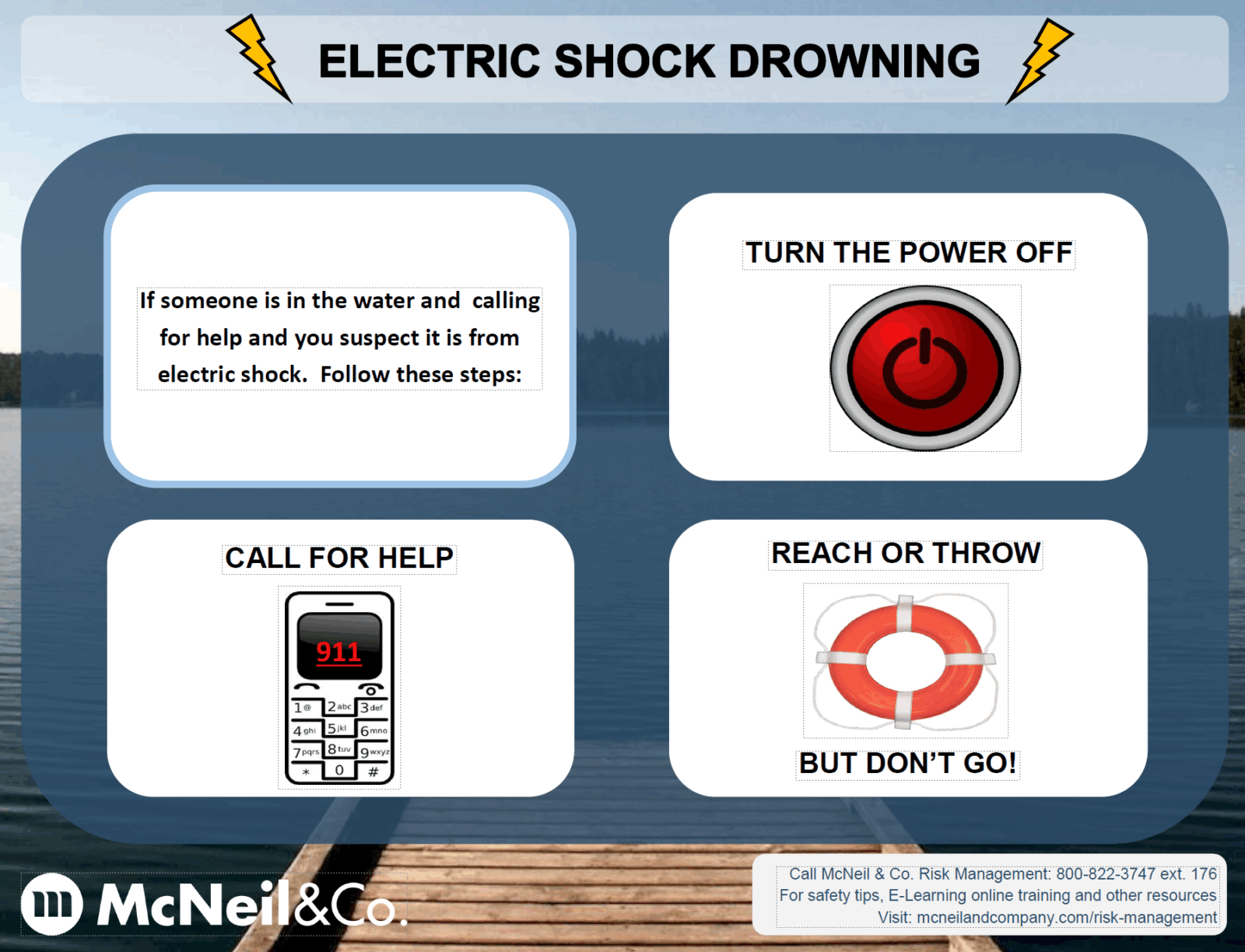Dock Safety: What You Can Do to Prevent Electric Shock Drowning
Katherine Niver
June 5, 2025
Enjoying a day on the water should be relaxing and fun—but safety must come first, especially when electricity is involved. Docks and boats, though seemingly harmless, can present serious electrical hazards if not properly maintained. Electric Shock Drowning (ESD) is a real danger, and taking the right precautions could save lives. Here are essential safety tips to help protect yourself, your family, and your employees from electrical hazards near the water.
Protect Electrical Outlets
Start by ensuring all electrical outlets near the waterfront have Ground Fault Circuit Interrupter (GFCI) protection. GFCIs are designed to shut off electrical power when a ground fault is detected, preventing dangerous shocks. If you’re unsure whether your outlets are properly protected, consult a licensed electrician.
Use Proper Wiring and Equipment
All wiring around docks should be enclosed in the correct conduit and shielded from water exposure. Never allow exposed or damaged cables to remain in service, as they can energize the surrounding water. If you’re experiencing any power issues on your dock, don’t try to fix them yourself—call a licensed electrician immediately.
Also, never use standard household extension cords to power boats or docks. These are not designed for wet environments and pose serious safety risks. Instead, use shore power cords built to UL standards—they’re specifically made for marine use and provide much better protection.
Install Warning Signs
A simple but effective way to enhance safety is to post Electric Shock Warning Signs in high-risk areas such as boat docks, ramps, and anywhere electricity is used near water. These signs can raise awareness and remind people to stay alert.
Test Safety Devices Regularly
Test your GFCI and Equipment Leakage Circuit Interrupters (ELCIs) at least once a month, or according to the manufacturer’s instructions. These devices are critical in detecting leaks and cutting off power before harm occurs.
Know the Dangers of ESD
Faulty wiring or damaged electrical cords can push dangerous current into the water. This creates a silent threat—electric current in the water can cause muscle paralysis, making it impossible for someone to swim to safety. Tragically, many ESD victims drown before they can be rescued.
Be Prepared to Respond
While prevention is key, knowing how to respond during an emergency is equally important. If someone experiences electric shock in the water, TURN THE POWER OFF immediately. Never jump in after them—REACH or THROW, but DON’T GO. Electrocution risks remain until the power source is disabled.
Train employees and maintain CPR certifications. ESD victims are often good candidates for successful resuscitation, but only if CPR is administered promptly and correctly.
For more safety tips, online training, and resources, visit: mcneilandcompany.com/risk-management
Or call McNeil & Co. Risk Management at 800-822-3747 ext. 176.
Waterfront safety starts with you. Make smart choices and keep your dock secure for everyone.
